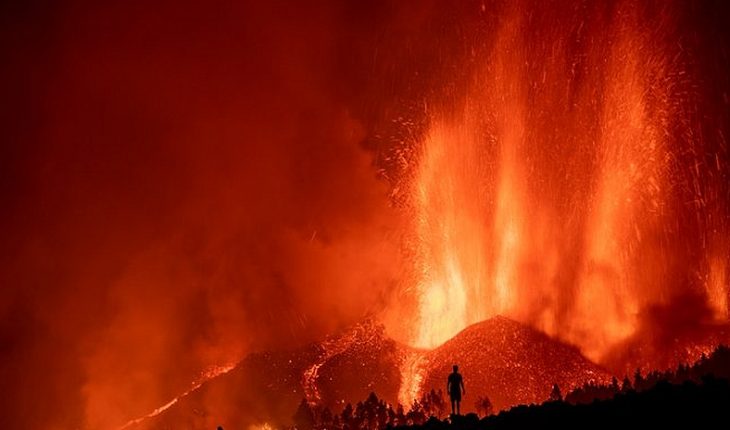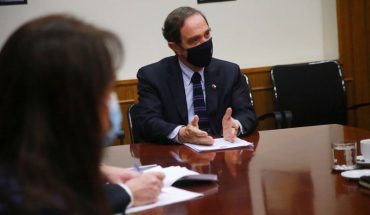The lava of the volcano of the Spanish island of La Palma reached the sea on Monday by a third point, so that the lava delta generated by the eruption, the so-called “fajana”, already occupies an area of 40.9 hectares from the shore. Specifically, the lava has continued its advance to the ocean especially by the 9th wash, said today the technical director of the Special Plan for Civil Protection and Emergency Care for Volcanic Risk of the Canary Islands (Pevolca), Miguel Ángel Morcuende, who said that the greatest energy of the magma is concentrated in the flows 4 and 7 by the central area of the affected area. Since the Cumbre Vieja volcano erupted on September 19, the surface affected by lava rises to 1,034.3 hectares, according to the latest estimates of the authorities of La Palma, which detail that the perimeter of the flows is 53.6 kilometers. In addition, the cadastre of La Palma figures in 1,462 the buildings destroyed, of them 1,181 homes, and in 65.5 the kilometers of damaged roads. This forced the evacuation of many residents of the area, of which about 480 are still housed in hotels and 43 dependent people in social health centers. As for the gases emitted, sulfur dioxide (SO2) is between 12,000 and 15,000 tons per day, higher than Sunday’s values, but within the downward trend from the maximums of 50,000 tons per day on September 23, according to PevolcaIn fact, air quality has worsened since last night in the stations of Puntagorda and Los Llanos de Aridane in terms of sulfur dioxide, in the latter locality also in particles less than ten microns, which made the situation extremely unfavorable for ten hours when exceeding 151 micrograms per cubic meter of air. In the rest of the seasons of the island, the levels are good. In this regard, the scientific spokesperson of Pevolca, María José Blanco, indicated that the conditions of thermal inversion at about 1,600 meters of altitude are not good for air quality, although the breeze from the east guarantees aerial operability at least in the next 36-48 hours. Although the levels of air quality have not made it impossible to continue the face-to-face teaching activity, the situation generates anxiety in the educational community, so talks will be held in the educational centers to meet the needs raised by families on the management of the situation and its repercussions in the family and school environment. Another parameter analyzed by experts is seismicity, which at intermediate levels is slightly descending and there are no changes in the depth or number or energy of earthquakes. In the last hours, the earthquake of greater magnitude was 4.4, registered at 38 kilometers deep and that was felt with intensity III.The tremor remains at low levels and the column of gases reaches 3,100 meters in height. In the opinion of scientists, the general downward trend in sulfur dioxide levels and earthquakes at intermediate depth could indicate that the volcanic system has less and less energy, although they are in favor of waiting for the values to be maintained over time to predict an upcoming end of the eruption. On the economic side, the regional government of the Canary Islands holds meetings in Brussels to ensure the shielding of European aid for those affected by the eruption, while the European Commission examines the instruments at its disposal to support the producers harmed. Attending today a Council of Ministers of Agriculture of the European Union that addressed the situation in La Palma at the request of Spain, the Spanish head of that portfolio, Luis Planas, asked that Brussels mobilize aid for farmers affected by the volcano.
Canary Islands: lava continues to fall into the sea in La Palma and occupies 41 hectares from the shore
November 16, 2021 |





